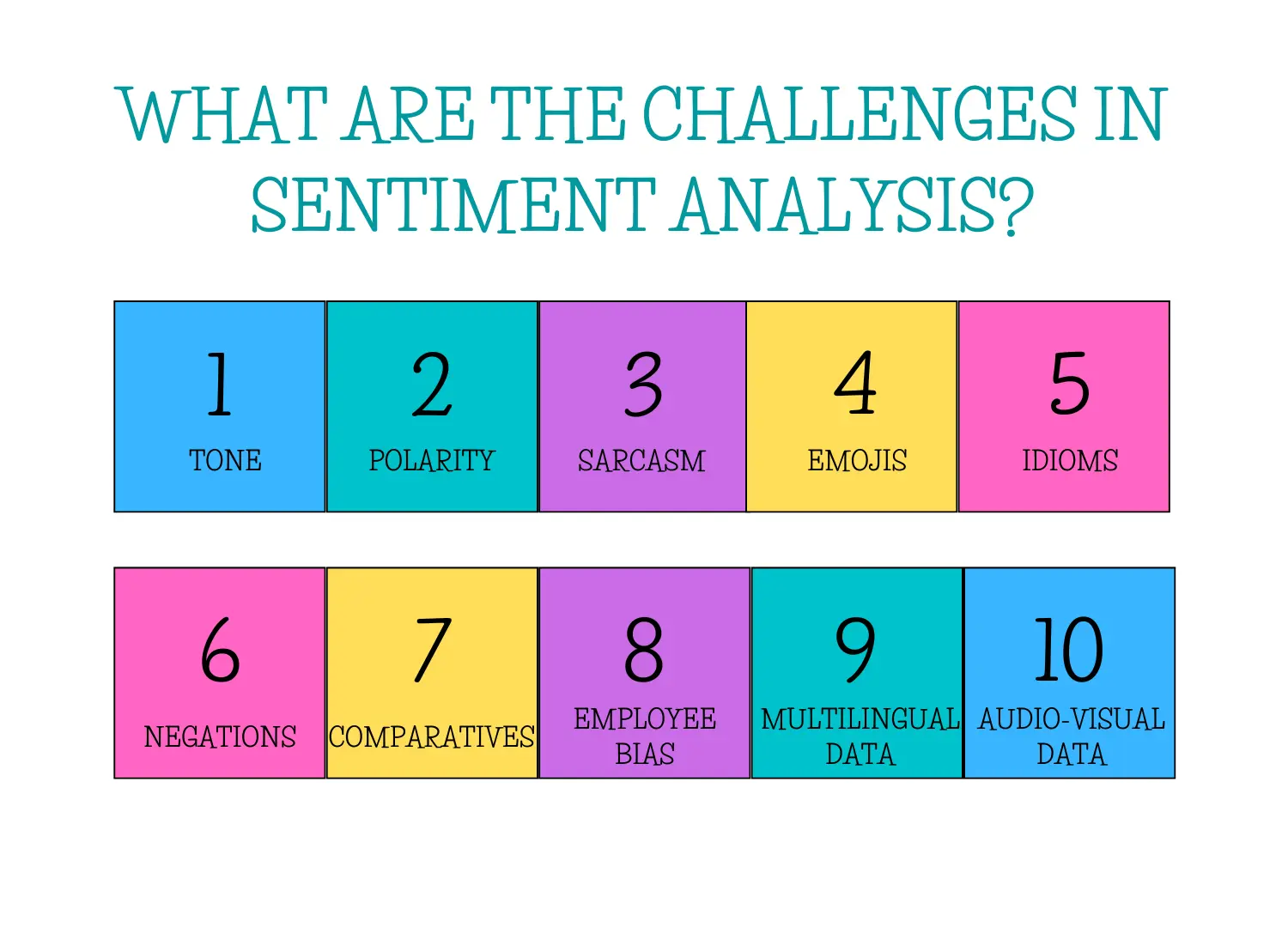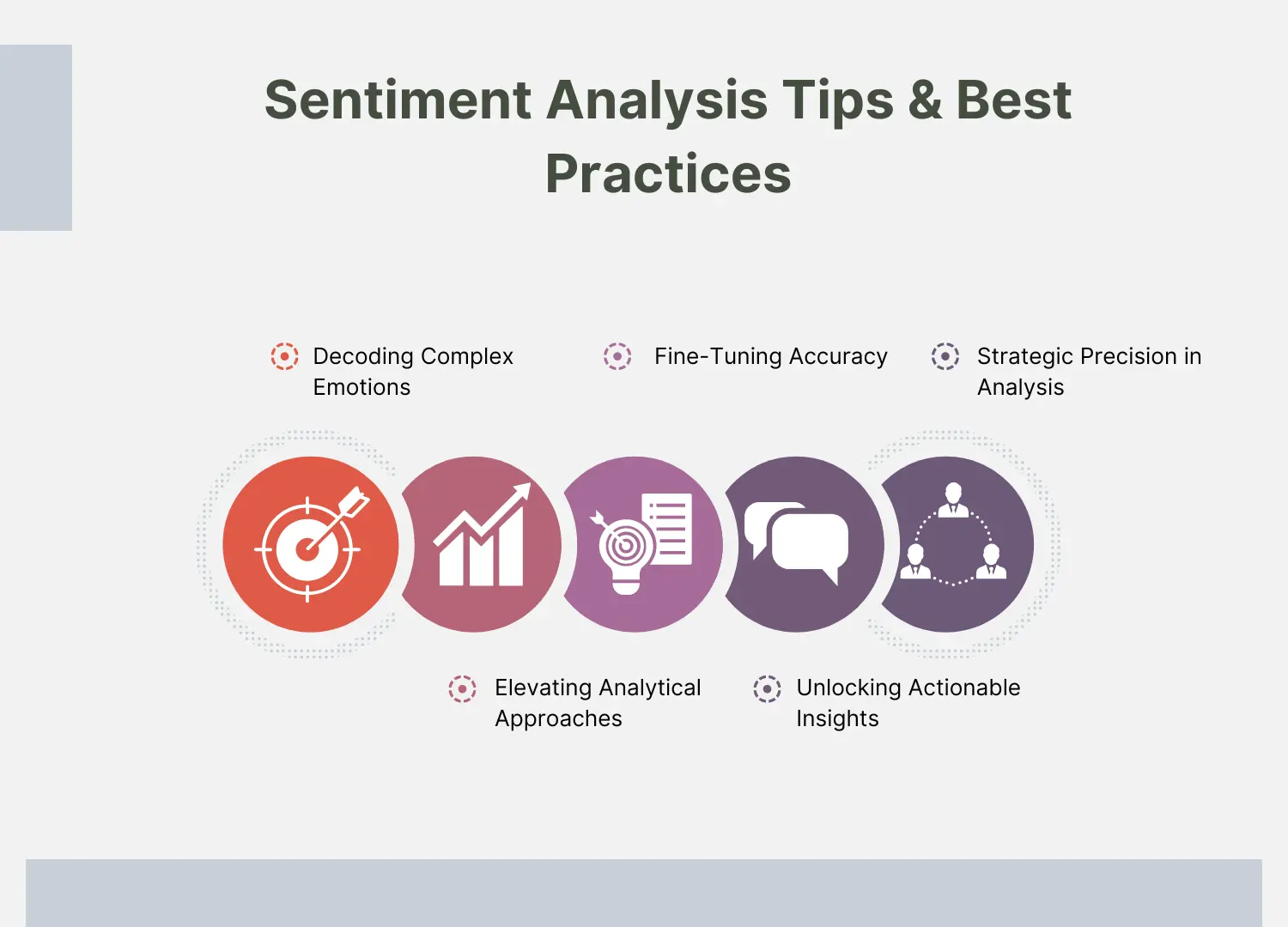Table of Contents
Human emotion is woven into the language your clients use online, just like non-verbal indicators do in face-to-face interactions. Sentiment analysis is the process of identifying these feelings and learning how people feel about your business. However, sentiment tracking is not easy. We are examining hundreds of discussions, mentions of brands, and reviews dispersed among numerous websites and platforms—some of which are occurring in real time. For this task, you require sentiment analysis tools.
It may surprise you to learn that companies using sophisticated sentiment analysis software report a 33% rise in client retention. This startling figure highlights the need for emotional intelligence in today’s business plans. When selling under pressure, agents employ sentiment analysis techniques to gauge the emotions of the customers they are speaking with. This enables them to modify their strategy, soothing irate callers and building a solid rapport with clients, guaranteeing a fruitful exchange.
One cannot undervalue the importance of sentiment analysis in contemporary business. Through the transformation of raw data from social media, customer reviews, and direct encounters into actionable insights, it helps businesses enhance their customer service, improve their marketing strategies, and create better goods. It can be difficult to select the best sentiment analysis tools. Sentiment analysis’s capabilities—which necessitate careful selection for effective data processing, easy integration, and scalability—are essential for preserving the effectiveness and quality of customer support.
Discover Positive Brand Mentions with Our Sentiment Analysis Solutions
What are Sentiment Analysis Tools?
Sentiment analysis technologies extract sentiments, emotions, intent, and urgency from unstructured feedback data with precision using AI, NLP technology, and LLM.
Gartner states that “Sentiment Analysis Tools enable organizations to analyze all forms of text data to determine the overall sentiment, opinion, or emotional tone expressed by the users in their messages.”
With the use of natural language processing services, these techniques may divide text data into more manageable portions that are readily examined to determine the underlying emotion. They classify words and phrases as positive, negative, or neutral and assign sentiment scores depending on a predefined scale on the algorithm.
Additionally, when more and more data is fed into the algorithm, it continues to change to become even more accurate. hence providing insightful information about areas for development, brand perception, and customer happiness. Even more than just sentiment analysis, the finest tools for sentiment analysis do more.
To assist you in determining the sentiments concealed in comments including a range of emotions, they even provide statement-based sentiment analysis. They can also recognize the entities mentioned in a comment. Advanced sentiment analysis software will recognize and share the sentiments, intents, and emotions associated with many things, such as products, employees, locations, etc.

How to Pick Tools for Sentiment Analysis
Selecting the appropriate sentiment analysis tools can boost brand reputation by proactively responding to negative feedback, improving customer service through feedback analysis, and offering insightful information for tailored customer communications. When you’re choosing, evaluating, and shortlisting sentiment analysis tools, keep the following in mind:
What issue are you attempting to resolve? To determine what features and capabilities the sentiment analysis tool must offer, first determine the sentiment analysis feature gap you are attempting to close.
Who is going to use it?
Take into account who will use the program and how many licenses you’ll need while evaluating costs and needs. You’ll need to determine if access is needed for the entire company or simply the customer experience team. Once that’s evident, you should think about whether you should prioritize speed for your sentiment analysis tool’s power users or ease of use for everyone.
What other tools does it require to operate?
Make it clear which tools you’re replacing, which ones you’re keeping, and which AI & ML tools—like accounting, CRM, or HR software—you’ll need to interface with. It will be up to you to choose whether the tools must work together or if you may use a single, integrated sentiment analysis tool to replace several different ones.
Which results matter?
Think about the outcome that the program must provide to be deemed successful. Think about the skills you wish to acquire or develop, as well as the success criteria you will use. One of the results might be the capacity to see performance more clearly. You might compare the features of sentiment analysis software until your eyes are blue, but you risk wasting a lot of precious time if you aren’t considering the results you hope to achieve.
How would it function in your company?
Take into account your workflows and delivery strategy in addition to the software choice. Examine the things that are doing well and the areas that want attention that are producing problems. Keep in mind that every company is unique, so don’t assume that just because a tool is well-liked, it will function well for you too.
Top 10 Tools for Sentiment Analysis
With all the consideration in sentiment analysis today, here are the top 10 sentiment analysis tools in use for the last couple of years.
HubSpot Service Center
Text and sentiment analysis are two of the tools that make HubSpot Service Hub so popular. It divides qualitative data into answers that are neutral, positive, and negative. The all-inclusive dashboard facilitates quick analysis of feedback. Integration with HubSpot’s CRM enables targeted review of responses.
This program is quite good at market research and sentiment analysis using AI. It is appropriate for small and large businesses looking to gain insightful information from client reviews and make well-informed decisions that will improve performance and satisfy customers.
Key components
- Separates satisfied from unsatisfied consumers using NPS and CSAT survey data for analysis
- Connects to Qualaroo, Salesforce, and Zapier
- User-friendly and intuitive UI
- Provides a range of goods, including marketing hubs and CRMs.
Brand24
Brand24 is an automated program for media monitoring. It compiles mentions made by the public from a range of internet sources, including news websites, blogs, forums, and social media. It examines text in real time and assigns sentiments based on word usage using sophisticated machine learning models and natural language processing algorithms.
This facilitates the quick identification of positive, negative, or neutral mentions. Brand frequency, social reach, influencers, and competition insights are all revealed by the tool’s extensive analytics and deep-learning technology which offer useful information for tactical decision-making.
Key Components
- Track social media and the web on many platforms.
- NLP & machine learning for instantaneous text analysis
- Accurate real-time mention gathering for robust analytics
- For more in-depth understanding, select the Analysis tab.
- Report exports to PDF for simple distribution
Lexalytics
A text-analysis tool with a special emphasis on comprehending client answers is offered by Lexalytics. It parses text and does sentiment analysis using natural language processing to determine the meaning behind communications.
The derived insights are presented in an approachable way that distinguishes it by disclosing customer sentiment together with its underlying causes. Lexalytics stands apart from other social media sentiment research tools with its unique methodology.
Key components
- Scores text emotions using NLP; creates graphs and tables from reports
- Connects with Angoss, Zapier, and so forth.
- 30 languages are supported
- Suitable for Microsoft Excel
Zonka Feedback
Zonka Feedback is a powerful customer feedback and experience management platform that enables businesses to capture feedback across every channel—email, SMS, WhatsApp, web, in-app, and offline kiosks. Designed for real-time insights, it uses AI to analyze responses, detect sentiment, and classify feedback by intent, urgency, and emotion. This helps businesses instantly identify promoters, detractors, and passives, and prioritize actions that improve customer satisfaction. With intelligent automation, real-time alerts, and detailed CX reporting, Zonka Feedback empowers teams to respond faster and smarter. It offers built-in support for CSAT, NPS, and CES metrics, along with robust integrations with CRMs, helpdesks, and workflow tools—making it easy to close the feedback loop and turn insights into measurable outcomes.
Key Components
- AI-driven sentiment detection with urgency and emotion tagging
- Real-time CX dashboards tracking CSAT, NPS, and CES
- Automated alerts and workflows to close the loop faster
- Integrations with CRM, support, and automation platforms
Brandwatch
One of the best social media sentiment research tools is Brandwatch, which focuses on user input from Facebook, Instagram, LinkedIn, Twitter, and other sites. It’s perfect for evaluating brand mentions on different forums and portals, giving you insight into the attitudes and feelings of your customers.
Medium-sized to large-sized enterprises might choose this tool because it is suggested for sentiment analysis of text and images as well as social media sentiment assessment.
Key Components
- Sentiment analysis and brand visibility in real-time
- Monitors data such as volume, activity, and followers. Image Insights finds photos that are relevant to a company.
- Assesses the performance of a brand’s image across platforms
- Lists and evaluates a collection of brand pictures
Hootsuite Insights
Hootsuite Insights is a top-notch brand sentiment analysis tool that effectively tracks consumer experiences; you can also utilize it. It converts data into insightful knowledge by utilizing its own Iris technology.
It is well-known for features like personalized notifications for abrupt drops in positive sentiment and is excellent at market research, multilingual emotion analysis, and social media sentiment analysis.
Key Components
- Monitors societal trends
- Mine viewpoints and evaluates emotions
- Accommodates 50 languages
- Connects to Talkwalker, Radarly, and other systems.
Repustate
Repustate has a sophisticated text-analysis API that can reliably identify the sentiment expressed in client feedback. It deduces meaning from context by skillfully identifying emoticons, slang, and short-form text.
Additionally, the program lets users customize API rules, which makes it possible to filter out linguistic quirks unique to a given business. This adaptability guarantees accurate sentiment analysis catered to your requirements, giving you total command over the evaluation of client comments.
Key Components
- Adapt API to industrial language
- Teach an algorithm the subtleties of slang
- A 1000-comment analysis per second
- Connects to multiple platforms
SurveySparrow
One of the greatest Sentiment Analysis Tools is SurveySparrow, with sophisticated features like Word Cloud and AI-powered text analytics and analytics. Engaging surveys (such as the NPS®, CES, and CSAT Surveys) can be made, responses from many platforms may be gathered, and the results can be shown on an executive dashboard that can be customized. After obtaining the data, evaluate the pattern and interpret the feelings and attitudes of your customers!
Additionally, CogniVue, an AI-powered text analytics tool, can produce a sentiment score based on keyword mentions and counts as well as do a root cause study. You can also look at the topic shift, which shows how customer sentiment has changed over a given time frame.
Key Components
- AI-driven questionnaires
- Respondent responses are filtered based on sentiment
- Using a word cloud, you can see which keywords are used again.
- Acts Analysis of Key Drivers
- Surveys that are repeated and feedback looping
- Ticket administration
Social Searcher
One of the greatest tools for social media sentiment analysis is available on Social Searcher. To analyze the tones of talks, it assesses inputs like keywords, hashtags, and usernames. It then provides useful analysis through platform-specific reports on distinct dashboards.
Furthermore, you can evaluate your success on each platform in-depth by accessing platform-specific reports on several dashboard panels. Small to mid-sized enterprises seeking free sentiment analysis tools will benefit from it the most.
Key Components
- Built-in API for outside applications
- Sort all citations using colored dots.
- Analytics particular to a platform
- Includes Social Buzz, Google Social Search, and so forth.
- Responses using emotional filters
Talkwalker
“Quick Search” from Talkwalker is a sentiment analysis tool housed inside a feature-rich customer support platform. It’s perfect for social media because it analyzes mentions, comments, engagements, and other data to determine how people feel about your company’s accounts.
By giving your staff access to client feedback, you can better design your marketing campaigns to attract and engage your target demographic. If your goals are to evaluate marketing outcomes, find content trends, come up with ideas, and locate influencers, this tool is something to think about.
Key Components
- Examines campaign metrics, including volume, interaction, and demographics
- Sentiment analysis with image recognition
- Locates themes, emoticons, and hashtags
- Compares products and/or brands
- Accommodates more than 20 languages

Advantages of a Tool for Sentiment Analysis
Using a sentiment analysis tool has several advantages. They center on determining the actual feelings of your customers and making sure that your interactions with them reflect those feelings.
Here are some of the principal advantages:
Predicting Customer Churn:
You can proactively fix issues and stop prospective churns before it’s too late by spotting unfavorable sentiment trends in customer feedback. Many sentiment analyses in NLP provide early intervention, which can save important client relationships and money. In reality, a lot of businesses discuss churn risk when utilizing AI to analyze consumer feedback.
Improving Product Development:
Examine user input to find unmet requirements and pinpoint areas in which products need to be improved. Machine learning companies can use this data as a roadmap to make products that connect with your target market.
Enhancing Advertising Initiatives:
To find out how different audience segments are responding to your marketing messaging, use sentiment analysis. This enables you to optimize your targeting and messaging for optimal effect and return on investment.
Campaign Effectiveness Measurement:
Monitor the conversation surrounding your marketing initiatives in real time. Also, modify your tactics in response to the input you get. By using a data strategy, you may increase the efficiency of your marketing campaigns.
Sentiment analysis can assist you in recognizing the first indications of new trends and consumer preferences. Being ahead of the curve allows you to modify your messaging and offers to take advantage of new opportunities. It is a useful technique for tracking the success of your response activities and for understanding public perception in crises. By using this information, you may reduce harm to your reputation and win back people’s trust.
Boosting company Advocacy:
You may win over customers’ loyalty to your company by addressing their issues and showing that you value their opinions. You may find these possibilities and build enduring relationships with your clients by using sentiment analysis.
Improved comprehension of the customer base:
Go beyond superficial data to get a true understanding of your customer’s thoughts and emotions.
Making Well-Informed Decisions:
Use sentiment analysis to improve customer experience, optimize marketing efforts, and establish product development priorities.
Improved Brand Reputation:
Prevent reputational harm and foster customer trust by promptly addressing unfavorable emotions.
Increased Customer Satisfaction:
Build a base of devoted and involved customers by efficiently attending to their needs and concerns.
Advantage of Competition:
Recognize client preferences and adjust your products to give yourself a data-driven advantage over rivals.
Customizing Interactions:
Sentiment analysis enables you to modify your correspondence according to the feelings of specific clients. For instance, you could congratulate people on their accomplishments or provide sympathetic support to those who are expressing discontent.
Enhancing Worker Performance:
Examine surveys and review responses from workers to find areas where training, interactions with coworkers, and general job satisfaction need to be improved. A more engaged and effective staff may result from this.
Tools for Sentiment Analysis: Their Features
Large volumes of data from posts, reviews, comments, and more can be analyzed with the use of sentiment analysis tools. This provides you with important information about how the general public views your brand and what customers think or feel about it. To guarantee that you provide the essential information for brand monitoring and consumer feedback research, we will go over the most crucial characteristics to look for in sentiment analysis tools below.
Web crawling capabilities:
The capacity to gather sentiment analysis data by scraping websites and social media. This is essential to ensure that your sentiment analysis encompasses a wide range of public opinion by compiling a large dataset from numerous web sources.
Keyword analysis:
It is the process of interpreting sentiment using text analysis software. This function aids in accurately assessing sentiment by breaking down the vocabulary used in different talks, including slang and specialized terminology.
Social media analysis:
It examines user sentiment on websites like Facebook and Twitter. This capability is critical for real-time sentiment research and comprehending public perception on the channels your consumers use most frequently, given the abundance of customer input available on social media.
Analytics and Reporting:
Provides powerful and adaptable reporting features. It is possible to turn complex data into actionable insights by customizing reports and analytics, which facilitates the process of strategizing based on sentiment trends.
Emotion Recognition:
Recognizes particular feelings in written language. This provides deeper insights into client sentiments and enriches the study by going beyond simple positive or negative categorization to comprehend the subtleties of human emotion.
Real-time Sentiment Analysis –
Offers sentiment analysis instantly. This is necessary to enable brands to respond quickly to shifts in public opinion and to developing trends.
Support for different Languages:
Capable of sentiment analysis in different languages. This functionality broadens the application of sentiment analysis, enabling comprehension of comments from a worldwide audience.
Accuracy and Machine Learning:
To achieve great accuracy, sophisticated algorithms are used. By learning from the subtleties of human language, machine learning models ensure that the tool gets increasingly accurate over time.
Integration Skills:
Easily connects to various platforms and technologies. By doing so, workflow may be streamlined and sentiment analysis data can be used to improve other marketing and customer support products.
Sentiment Trend Analysis:
Monitors how sentiment evolves. This tool allows your team to track changes in public opinion, which helps them see trends and maybe predict how the public will respond to new projects or goods in the future.
Sentiment analysis tools are essential for accomplishing many goals, such as improving company reputation, customizing marketing methods, or increasing customer involvement. They facilitate a more sophisticated knowledge of customer emotions and opinions that inspire actionable insights, allowing your firm to move closer to its strategic goals with more simplicity and efficacy.
Tools for Sentiment Analysis: Cost & Pricing
A variety of plans and pricing choices are available for sentiment analysis tools. These cater to different corporate demands and budgets.
The majority of vendors providing sentiment analysis tools offer tiers of plans that usually go from free to enterprise. The features, data visualization tools, data processing capacities, and support choices of these programs frequently vary. Artificial intelligence solutions companies offer additional capabilities and scalability for larger enterprises or those wanting more extensive insights, while free plans are typically more suited for individuals or small teams with limited requirements.
Conclusion
Choosing the best package takes careful evaluation of your unique needs and budget, regardless of whether you’re just beginning to investigate the influence sentiment analysis may have on understanding consumer feedback or you’re ready to adopt a complete solution for thorough brand monitoring. Sentiment analysis tools will not only integrate into your operations effortlessly but will also more precisely and effectively lead your company toward strategic success if you match your choice to your business objectives.
FAQs
What is sentiment analysis?
Sentiment analysis, also known as opinion mining, looks for a more complete expression context, which includes the users’ or customers’ emotional tone, attitudes, and opinions. E-commerce, politics, and customer service are among the industries where sentiment analysis is frequently used.
How is sentiment analysis carried out?
Fundamentally, sentiment analysis is the process of identifying, obtaining, and quantifying the emotional undertone. Especially of words through the application of algorithms and natural language processing (NLP) approaches. It’s similar to teaching a computer to comprehend not just the meaning of words but also their emotions. Simple polarity checks (positive, negative, and neutral) to more intricate emotional states and goals can all be part of this procedure. It’s intriguing because it uses a combination of computer science, psychology, and linguistics to efficiently extract human emotion from textual data. This is a thorough explanation of sentiment analysis.
What is the purpose of sentiment analysis?
Sentiment analysis is immensely flexible and is used to measure public opinion, track brand reputation, and comprehend customer experiences in a wide range of industries, including marketing and customer service. It provides information about client satisfaction and areas that require improvement in customer service. By analyzing audience responses, marketing strategies can be more effectively tailored. In essence, it’s an effective tool for any company trying to improve customer experience through data-driven decision-making and emotional resonance with their audience.
Which kinds of tools are available for sentiment analysis?
Software for CX includes tools for sentiment analysis. Typical kinds of emotion analyzers consist of:
- Tools for social media sentiment analysis, typically included in social media monitoring programs
- Software for text analysis
- Tone analyzers and other voice sentiment analysis tools
- Platforms for customer intelligence
Are there any free tools for sentiment analysis?
While they might not have as many capabilities as their more expensive equivalents, free sentiment analysis programs are nonetheless available. For instance, freemium versions of the plans are available for MonkeyLearn, IBM Watson, and MeaningCloud.
What are sentiment analysis’s main obstacles?
The intricacy and subtlety of human emotion are one of the primary challenges in sentiment analysis. Irony, sarcasm, and context-specific meanings can cause problems and complicate algorithms’ ability to interpret sentiment correctly. Furthermore, any sentiment analysis program must constantly learn and adapt because languages change and new slang and idioms appear. It’s a never-ending game of catch-up that calls for complex models that comprehend not just language but also the subtleties of interpersonal communication.






